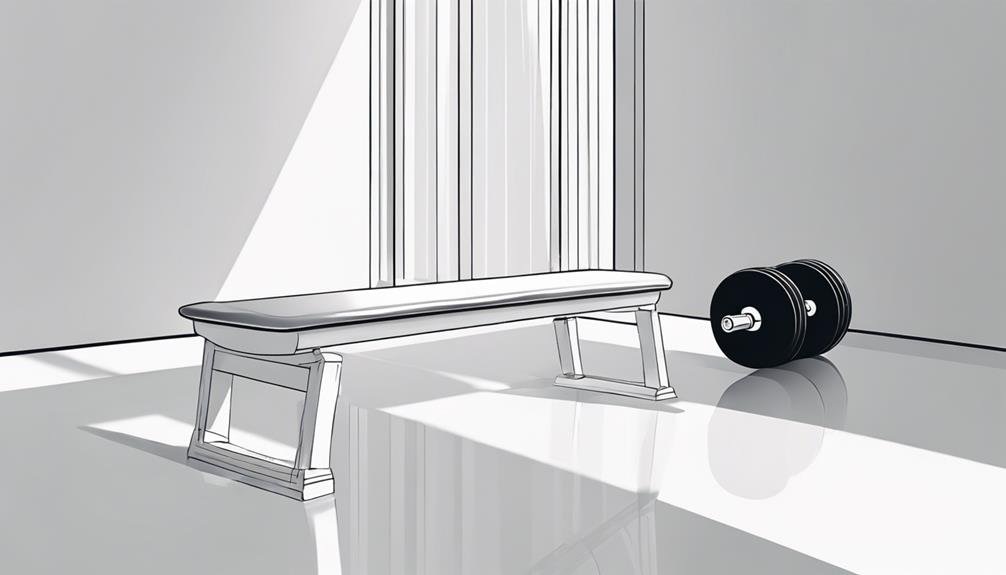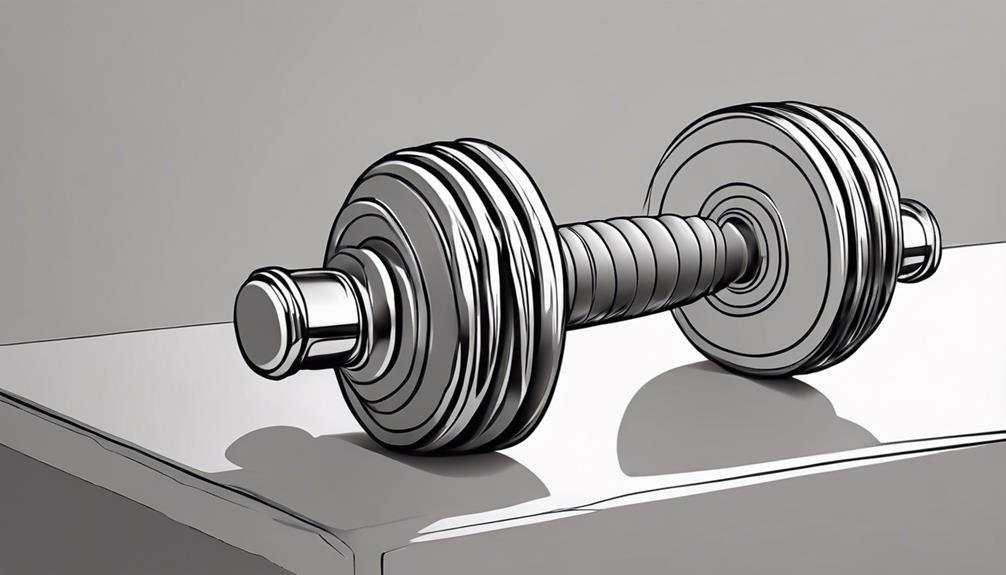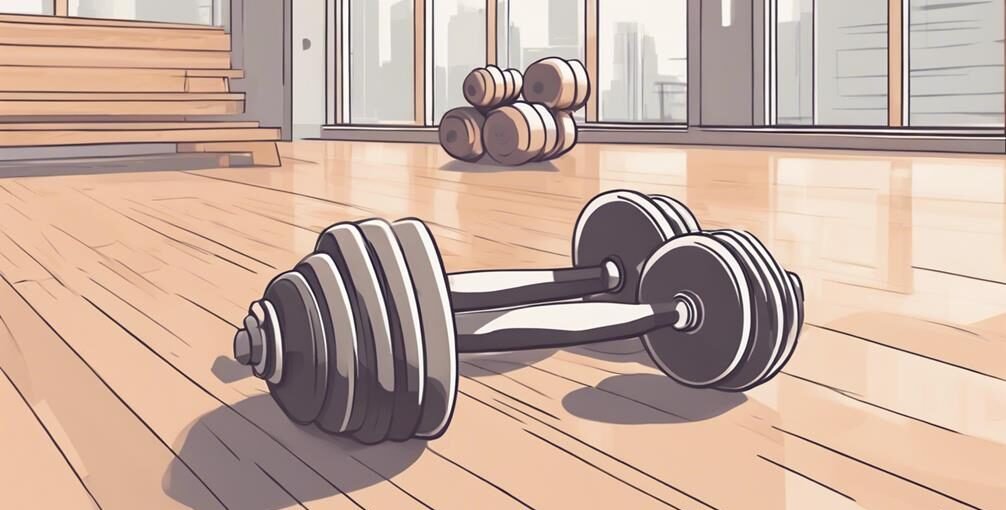5 Essential Dumbbell Exercises for Men Over 40
If you're over 40, incorporating dumbbell exercises into your routine can greatly enhance your strength and fitness. Start with the Dumbbell Bench Press to target your chest, shoulders, and triceps. Include Bent-Over Rows to improve your back strength and posture. Don't forget the Dumbbell Shoulder Press to stabilize your shoulders. For your lower body, add Dumbbell Lunges, which build strength and enhance balance. Finally, consider a Dumbbell Deadlift for overall body conditioning. These exercises will help you stay fit and agile. Stick around to discover a few more essential moves that can keep you strong and active.
Key Takeaways
- Focus on compound movements like the Dumbbell Bench Press to build upper body strength effectively and enhance muscular endurance.
- Incorporate Dumbbell Bent-Over Rows to improve posture, stability, and back strength, crucial for preventing slouching with age.
- Utilize Dumbbell Shoulder Press for strengthening deltoids and enhancing shoulder stability, promoting overall upper body function.
- Perform Dumbbell Lunges to boost lower body strength, targeting quads, hamstrings, and glutes while improving balance and coordination.
Benefits of Dumbbell Training
Dumbbell training offers men over 40 a versatile and effective way to build strength, improve balance, and enhance overall fitness. By incorporating dumbbells into your routine, you can target specific muscle groups, allowing for balanced development and reducing the risk of injury.
These weights are easy to adjust, enabling you to progressively challenge yourself as your strength increases. Moreover, dumbbell exercises often engage stabilizing muscles, which boosts your balance and coordination—crucial for maintaining mobility as you age.
You'll also enjoy the convenience of performing workouts at home or in the gym, making it easier to fit into your busy schedule. Ultimately, dumbbell training empowers you to take control of your health and fitness journey, fostering long-term well-being.
Exercise 1: Dumbbell Bench Press

The dumbbell bench press is a fantastic exercise that helps you build upper body strength while engaging your chest, shoulders, and triceps effectively.
To perform it, lie back on a flat bench with a dumbbell in each hand, arms extended above your chest. Lower the dumbbells slowly to the sides of your chest, keeping your elbows at about a 45-degree angle. Push the weights back up to the starting position, fully extending your arms.
Start with a weight that feels manageable, focusing on form over quantity. Aim for three sets of 8-12 repetitions, resting for 60 seconds between sets.
This exercise not only enhances muscular endurance but also helps improve your overall stability and coordination.
Exercise 2: Dumbbell Bent-Over Row
Building on the upper body strength you developed with the dumbbell bench press, the bent-over row targets your back muscles, enhancing posture and stability.
To perform this exercise, stand with your feet shoulder-width apart, hold a dumbbell in each hand, and hinge at your hips, keeping your back straight. Bend your knees slightly and let the weights hang down.
Pull the dumbbells toward your waist, squeezing your shoulder blades together at the top of the movement. Lower the weights back down with control.
Aim for three sets of 8-12 reps. This exercise not only strengthens your upper back but also helps prevent slouching, making it an essential addition to your routine as you age.
Exercise 3: Dumbbell Shoulder Press

Shoulder presses are a fantastic way to strengthen your deltoids and improve overall shoulder stability, which is essential as you age.
To perform this exercise, grab a pair of dumbbells and sit or stand with your feet shoulder-width apart. Start with the dumbbells at shoulder height, palms facing forward.
As you exhale, press the weights overhead until your arms are fully extended. Hold for a moment, then lower the dumbbells back to the starting position.
Aim for 3 sets of 8-12 repetitions, adjusting the weight as needed. Remember to keep your core engaged and back straight to prevent injury.
Incorporating the dumbbell shoulder press into your routine can enhance your upper body strength and functional fitness.
Exercise 4: Dumbbell Lunges
Incorporating dumbbell lunges into your workout can greatly boost your lower body strength and stability, complementing the upper body gains from shoulder presses.
To perform a dumbbell lunge, stand tall with a dumbbell in each hand, arms at your sides. Step forward with one leg, lowering your hips until both knees are bent at about 90 degrees. Keep your front knee aligned over your ankle and your back knee hovering just above the ground.
Push through your front heel to return to the starting position, then switch legs. Aim for three sets of 10-12 reps on each side.
This exercise not only strengthens your quads, hamstrings, and glutes but also enhances balance, which is essential as you age.
Questions
How Often Should Men Over 40 Train With Dumbbells?
You should aim to train with dumbbells at least two to three times a week. This frequency helps build strength and endurance while allowing your body to recover effectively between workouts. Consistency is key!
Can I Use Dumbbells if I Have Previous Injuries?
Yes, you can use dumbbells with previous injuries, but it's essential to consult a healthcare professional first. Start with lighter weights, focus on proper form, and listen to your body to avoid further strain.
What Weight Should I Start With for Dumbbell Exercises?
Choosing your starting weight's like finding the right pair of shoes—it needs to fit comfortably. Start with lighter weights, focusing on form. Gradually increase as you build strength and confidence in your movements.
Are There Any Warm-Up Exercises Recommended Before Training?
Before training, you should definitely warm up. Try dynamic stretches like arm circles, leg swings, and torso twists. These movements increase blood flow, improve flexibility, and prepare your muscles for the workout ahead.
How Can I Avoid Muscle Soreness After Dumbbell Workouts?
To stave off muscle soreness post-workout, guarantee you're hydrating, stretching, and gradually increasing intensity. Incorporating active recovery days and adequate rest will also help your muscles bounce back quicker. You're on the right track!
Conclusion
Incorporating these five crucial dumbbell exercises into your routine can be your ticket to vibrant vitality as you navigate the golden years.
With each rep, you're not just lifting weights; you're sculpting a stronger, more resilient version of yourself, ready to embrace life's adventures.
So, grab those dumbbells and let their weight become a feather in your cap, guiding you toward a healthier, more invigorated future.
Your body will thank you for every drop of effort you invest!

